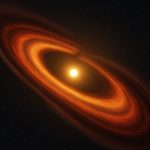Webb Telescope spots warm space dust escaping a distant galaxy
In a far-off galaxy named Makani—Hawaiian for “wind”—astronomers have spotted something remarkable.
Tiny dust particles, heated by the light of newborn stars, were carried out...
Early-universe stars likely formed in pairs, study finds
Astronomers have long known that many of the largest stars in our Milky Way do not live alone but instead exist in pairs.
Now, an...
Scientists detect traces of ancient magnetic fields in the early universe
Magnetism is everywhere in the universe today—from the Earth’s protective magnetic shield to the powerful fields surrounding stars and galaxies.
But where did it all...
Scientists uncover mystery behind white dwarfs escaping the Milky Way
Astronomers have uncovered the origins of some of the fastest stars in the Milky Way—hypervelocity white dwarfs, which can travel at speeds exceeding 2,000...
Metals are critical to life – we should screen exoplanets for them
Life is complicated, and not just in a philosophical sense.
But one simple thing we know about life is that it requires energy, and to...
A cosmic butterfly may hold secrets of Earth’s origins
Astronomers studying a glowing “cosmic butterfly” have uncovered new clues about how worlds like Earth may have first formed.
Using the powerful James Webb Space...
Why the universe loves a double helix, from the Sun to the stars
The Sun’s outer atmosphere, known as the solar corona, is a strange and violent place.
It is a million times hotter than the Sun’s surface...
How warped cosmic disks are changing our view of planet formation
For decades, scientists have imagined planet formation as a calm and orderly process.
The picture was simple: young stars surrounded by flat, pancake-like disks of...
What, exactly, is space-time?
Few ideas in modern science have reshaped our understanding of reality more profoundly than space-time—the interwoven fabric of space and time at the heart...
Scientists unlock a safer, stronger energy source for space travel
Scientists at the University at Albany have made a breakthrough that could change how rockets are fueled in the future.
A team of chemists, led...










